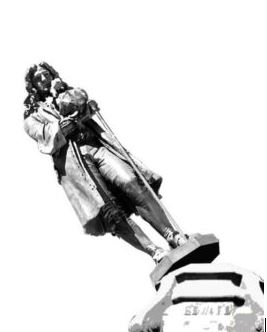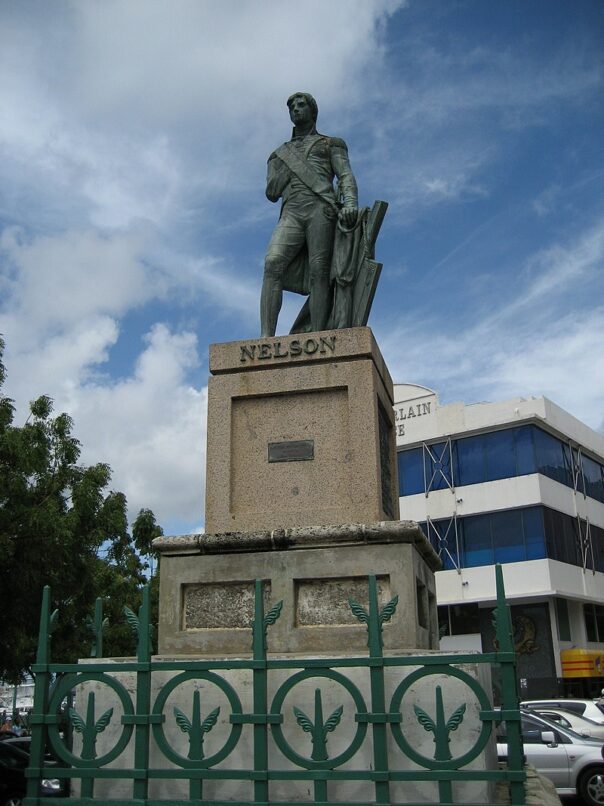
All over the world I’ve seen grandchildren of slave masters tearing down slave masters statues – over in England they put it in the river.
Reverend Al Sharpton speaking at the funeral of George Floyd in Houston, Texas, 10 June 2020.
It’s been quite a fortnight. Last week we had the declaration of the new Republic of Barbados (we salute you!) exactly 55 years after gaining independence from Britain, and this week, news that the jewel in the crown of the Society of Merchant Venturers, Colston’s School, has decided to change its name after 300 years. What event connects these two historic changes? It’s the felling of the Colston statue in Bristol in June 2020 by Black Lives Matter (BLM) demonstrators.
Both of these historic changes in Barbados and Bristol share some similarities. First, they were controversial. Second, they had been long overdue. Third, pressure had been applied by campaigners for some time without success. A constitutional review commission recommended republican status for Barbados in 1998. The Countering Colston campaign has been active for six years, with protest and dissent about Edward Colston stretching back a century. Both campaigns had achieved a lot but had failed to achieve their ultimate objectives, that was until the actions of the BLM protestors in Bristol.

In Barbados, the actions of the worldwide BLM movement and the fall of the Colston reopened the debate on a statue that dominated the centre of Bridegtown, that of Horatio Nelson who defended colonial slavery. The statue was graffitied many times, most famously after the fall of Colston in June with the words ‘Tek me down’. The following month the minister of culture announced it would be taken down and within months the statue was removed and Barbados had ditched the Queen and announced it would become a Republic on the anniversary of its independence in 2021.
The governing bodies of both Colston’s Girl’s School (CGS) in Montpelier and Colston’s School in Stapleton in Bristol had been steadfast in resisting change despite pressure from some pupils, parents and teachers generated as a result of the Countering Colston campaign to expose the history of their namesake. In November 2017 the Venturers Trust, the governors of CGS, made it very clear they weren’t going to change the name of the school despite the wishes of their students and argued that they saw “no benefit in denying the school’s financial origin and obscuring history”. The vacuous and hackneyed claim that removing the name of Colston from the school was ‘erasing history’ seemed to be their last word. Less than 3 years later that would all change. Within ten days of the toppling of the statue both Colston schools announced they would consider a name change, and in November 2020 CGS became Montpelier High School. Colston’s school followed a year later.
The felling of Colston’s statue by a mass movement has been described as ‘a massive distraction’ by some commentators. What they have failed to understand though, is hugely symbolic actions can produce some concrete outcomes, as they open up debate, energise latent opinion and effect change in public views. This can spur institutions and local and national governments to act. It should also be pointed out that the Countering Colston campaigners were never stupid (or arrogant) enough to believe that their actions alone would bring about an anti-racist Bristol.
Instead they concentrated on achieving the limited objectives of drawing out and challenging the institutions that defended the legacy of Edward Colston: the Society of Merchant Venturers, the Colston Societies, the Venturers Trust that governed the various Colston schools, the Church of England and the University of Bristol. The conjunction of this successful campaign and the action of a social movement (BLM) led to the symbolic fall of the statue and the concrete fall of the wider ‘cult of Colston’. This is, of course, not enough, but no one thought it was anyway.
In order to assess the impact of the toppling of Colston in Bristol members of Countering Colston and Bristol Radical History Group compiled the following timeline. This documents the period from the fall of the statue on June 7 2020 to the end of the year, for Bristol, the UK and the World. This timeline is unfinished as the effects of the toppling of Colston are still reverberating.